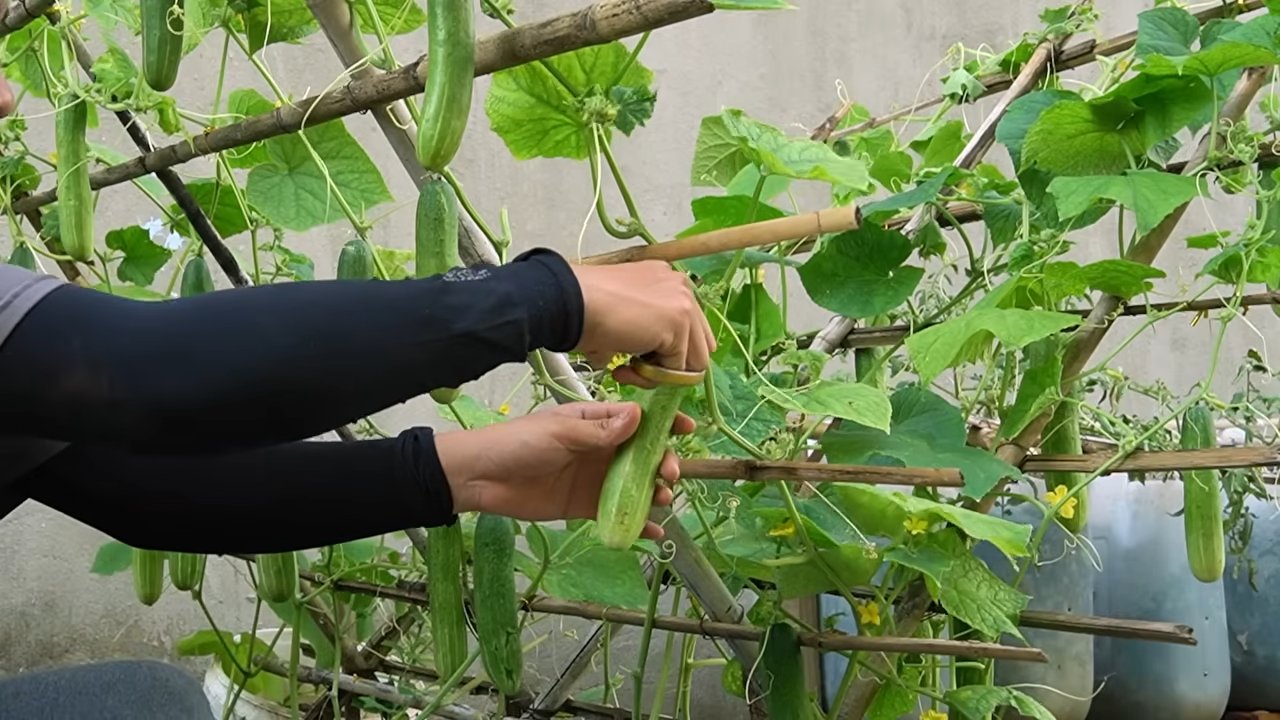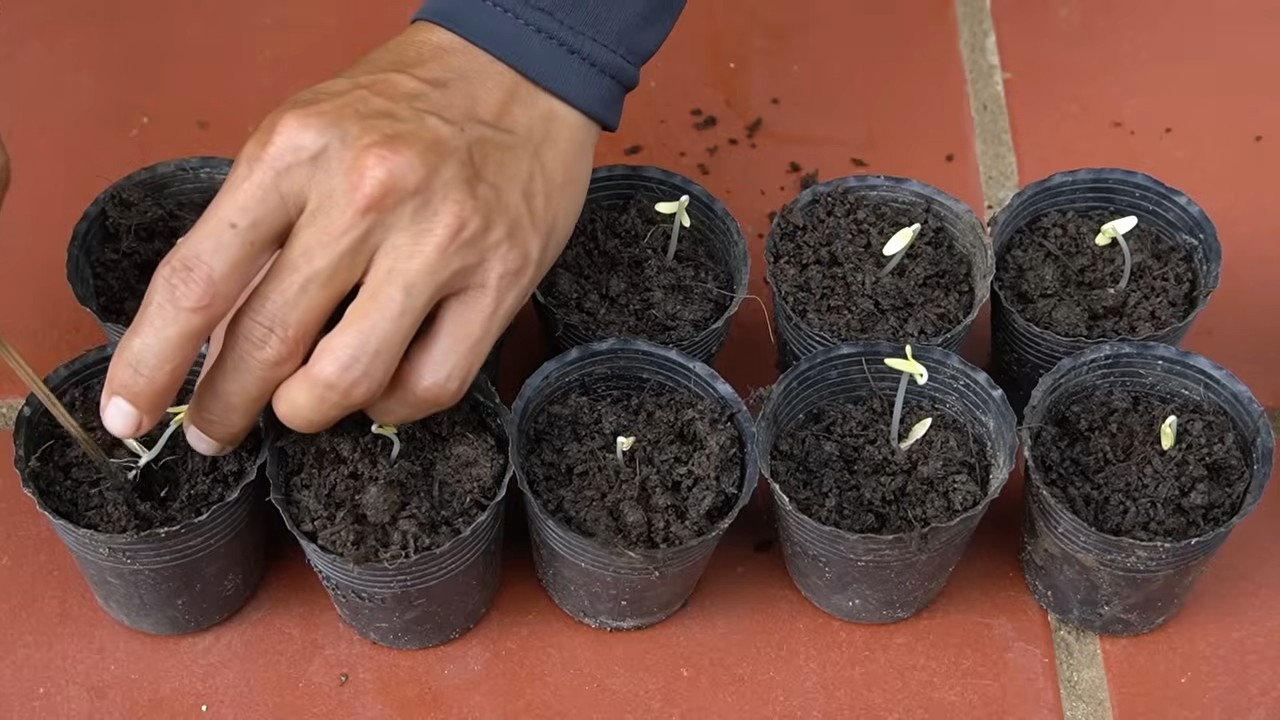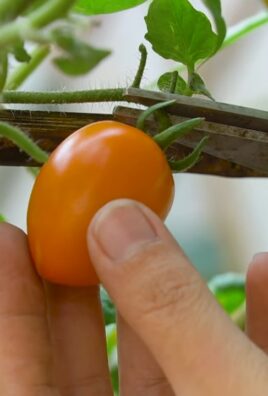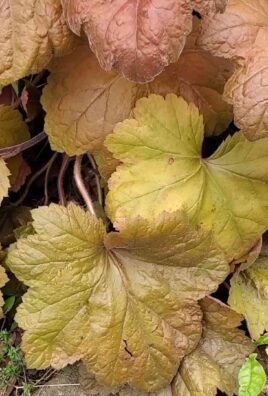Cucumber growing tips are what every gardener, from novice to seasoned pro, craves when those first seedlings emerge! Let’s face it, there’s nothing quite as satisfying as biting into a crisp, homegrown cucumber, bursting with flavor that store-bought varieties just can’t match. But getting there can sometimes feel like a battle against pests, diseases, and unpredictable weather.
Cucumbers have a rich history, dating back thousands of years to their origins in India. They’ve been enjoyed by cultures around the world, from the ancient Romans to the Egyptians, who valued them not only for their taste but also for their medicinal properties. Today, the desire to cultivate our own food, connect with nature, and enjoy healthier, pesticide-free produce is driving a resurgence in home gardening, making cucumber growing tips more valuable than ever.
That’s why I’ve put together this guide packed with DIY tricks and hacks to help you achieve a bountiful cucumber harvest. We’ll explore simple yet effective techniques to boost your yields, combat common problems, and ensure your cucumbers thrive. Whether you’re dealing with limited space, struggling with pollination, or simply want to maximize your cucumber production, these tips will empower you to grow the best cucumbers you’ve ever tasted. Get ready to roll up your sleeves and transform your garden into a cucumber paradise!

Growing Cucumbers Like a Pro: My DIY Guide to a Bountiful Harvest
Okay, cucumber lovers, gather ’round! I’m going to share all my secrets to growing cucumbers that are so crisp, juicy, and plentiful, you’ll be giving them away to the neighbors (and maybe even pickling a few batches!). This isn’t just about throwing some seeds in the ground; we’re talking about a strategic, DIY approach that will maximize your yield and minimize those pesky cucumber problems.
Choosing the Right Cucumber Variety
First things first, let’s talk cucumbers. There are so many varieties, it can be overwhelming! But don’t worry, I’ll break it down.
* Slicing Cucumbers: These are your classic cucumbers, perfect for salads and sandwiches. Think ‘Marketmore 76’ or ‘Straight Eight’. They’re usually long and smooth-skinned.
* Pickling Cucumbers: Shorter and stubbier with bumpy skin, these are ideal for pickling. ‘National Pickling’ and ‘Boston Pickling’ are popular choices.
* Burpless Cucumbers: If you’re sensitive to cucumbers, these are your best bet. They have thinner skins and are easier to digest. ‘Sweet Success’ is a great option.
* Bush Cucumbers: If you’re short on space, bush varieties are perfect for containers. ‘Spacemaster’ and ‘Bush Champion’ are compact and productive.
Consider your climate, space, and intended use when choosing your cucumber variety. I personally love growing a mix of slicing and pickling cucumbers so I have options!
Preparing Your Cucumber Patch: Location, Soil, and Support
Cucumbers are sun-loving, hungry plants, so proper preparation is key.
* Sunlight: Cucumbers need at least 6-8 hours of direct sunlight per day. Choose a location that gets plenty of sunshine.
* Soil: Well-drained, fertile soil is essential. Cucumbers are heavy feeders, so amend your soil with plenty of compost or well-rotted manure before planting. A slightly acidic soil pH (around 6.0-6.8) is ideal.
* Support: Cucumbers are vines, so they need support to climb. This not only saves space but also improves air circulation, reducing the risk of disease. You can use trellises, fences, or even tomato cages. I prefer trellises because they allow for maximum vertical growth.
Step-by-Step Planting Guide
Now for the fun part: getting those cucumber seeds in the ground!
1. Starting Seeds Indoors (Optional): If you live in a cooler climate with a short growing season, you can start your cucumber seeds indoors about 3-4 weeks before the last expected frost. Sow the seeds in peat pots or biodegradable containers to avoid disturbing the roots when transplanting. Keep the soil moist and warm (around 70-80°F).
2. Direct Sowing: Once the soil has warmed up to at least 60°F (usually a couple of weeks after the last frost), you can direct sow your cucumber seeds. Plant the seeds about 1 inch deep and 12-18 inches apart.
3. Transplanting Seedlings: If you started your seeds indoors, harden them off gradually by exposing them to outdoor conditions for a few hours each day for about a week before transplanting. Plant the seedlings at the same depth they were growing in their containers, spacing them 12-18 inches apart.
4. Watering: Water your cucumber plants deeply and regularly, especially during hot, dry weather. Aim for about 1 inch of water per week. Avoid overhead watering, as this can promote fungal diseases. Drip irrigation or soaker hoses are ideal.
5. Mulching: Apply a layer of mulch around your cucumber plants to help retain moisture, suppress weeds, and regulate soil temperature. Straw, wood chips, or shredded leaves work well.
Caring for Your Cucumber Plants: Fertilizing, Pruning, and Pest Control
Once your cucumber plants are established, it’s important to provide them with proper care to ensure a healthy and productive harvest.
* Fertilizing: Cucumbers are heavy feeders, so fertilize them regularly with a balanced fertilizer. I like to use a liquid fertilizer every 2-3 weeks. You can also side-dress your plants with compost or well-rotted manure.
* Pruning: Pruning can help improve air circulation and encourage fruit production. Remove any yellowing or diseased leaves. You can also prune the side shoots (the small branches that grow from the main stem) to encourage the plant to focus its energy on producing fruit.
* Pest Control: Cucumbers are susceptible to a few common pests, including cucumber beetles, aphids, and squash bugs. Inspect your plants regularly for signs of infestation. Handpick any pests you find. You can also use insecticidal soap or neem oil to control pests.
* Disease Prevention: Cucumbers are also susceptible to fungal diseases, such as powdery mildew and downy mildew. To prevent these diseases, provide good air circulation, avoid overhead watering, and apply a fungicide if necessary.
Training Your Cucumbers on a Trellis
Training your cucumbers to climb a trellis is easier than you think, and it makes a huge difference in terms of space and yield.
1. Choose Your Trellis: Select a sturdy trellis that is at least 6 feet tall. Make sure it’s securely anchored in the ground.
2. Guide the Vines: As your cucumber vines grow, gently guide them towards the trellis. You can use plant ties or twine to secure the vines to the trellis.
3. Encourage Vertical Growth: Encourage the vines to grow upwards by pruning any side shoots that are growing horizontally.
4. Maintain Air Circulation: As the vines become dense, prune any leaves that are blocking air circulation.
Harvesting Your Cucumbers
The moment you’ve been waiting for! Harvesting is the most rewarding part of growing cucumbers.
* Harvest Time: Harvest your cucumbers when they are the desired size and color. Slicing cucumbers are usually ready to harvest when they are about 6-8 inches long. Pickling cucumbers are usually ready to harvest when they are about 3-4 inches long.
* Harvesting Technique: Use a sharp knife or pruners to cut the cucumbers from the vine. Be careful not to damage the vine.
* Regular Harvesting: Harvest your cucumbers regularly to encourage continued fruit production. Overripe cucumbers can become bitter and will slow down the production of new fruit.
Troubleshooting Common Cucumber Problems
Even with the best care, you might encounter some problems along the way. Here’s how to troubleshoot some common cucumber issues:
* Yellowing Leaves: Yellowing leaves can be caused by a variety of factors, including nutrient deficiencies, overwatering, underwatering, or disease. Check the soil moisture and nutrient levels. If the soil is too wet, improve drainage. If the soil is lacking nutrients, fertilize your plants.
* Bitter Cucumbers: Bitter cucumbers can be caused by stress, such as heat, drought, or nutrient deficiencies. Provide your plants with consistent moisture and nutrients. Choose burpless varieties if you are particularly sensitive to bitterness.
* Misshapen Cucumbers: Misshapen cucumbers can be caused by poor pollination or nutrient deficiencies. Ensure that your plants are getting adequate pollination by attracting pollinators to your garden. Fertilize your plants with a balanced fertilizer.
* Lack of Fruit Production: Lack of fruit production can be caused by a variety of factors, including poor pollination, nutrient deficiencies, or disease. Ensure that your plants are getting adequate pollination. Fertilize your plants with a balanced fertilizer. Check your plants for signs of disease.
My Secret Weapon: Companion Planting
Companion planting is a fantastic way to boost your cucumber crop naturally. Here are some of my favorite cucumber companions:
* Marigolds: These beautiful flowers repel nematodes and other pests.
* Nasturtiums: These edible flowers attract aphids away from your cucumbers.
* Dill: Dill attracts beneficial insects that prey on cucumber pests.
* Beans: Beans fix nitrogen in the soil, which benefits cucumbers.
* Radishes: Radishes deter cucumber beetles.
Making the Most of Your Cucumber Harvest
Now that you have a mountain of cucumbers, what do you do with them all? Here are a few ideas:
* Salads: Cucumber salads are a refreshing and healthy way to enjoy your harvest.
* Pickles: Pickling cucumbers is a great way to preserve them for later.
* Gazpacho: This cold soup is perfect for hot summer days.
* Cucumber Water: Infuse water with cucumber slices for a refreshing and hydrating drink.
* Gifting: Share your bounty with friends, family, and neighbors!
Saving Cucumber Seeds for Next Year
If you want to save seeds from your favorite cucumber varieties, here’s how:
1. Choose the Best Cucumbers: Select the

Conclusion
So, there you have it! Mastering these simple yet effective cucumber growing tips can transform your garden from a struggling patch to a thriving haven of crisp, delicious cucumbers. We’ve covered everything from selecting the right varieties and preparing your soil to providing optimal support and warding off common pests and diseases.
But why is this DIY approach a must-try? Because it empowers you to take control of your food source, ensuring you’re enjoying cucumbers that are not only bursting with flavor but also free from harmful chemicals. Plus, there’s an undeniable satisfaction that comes from nurturing a plant from seed to harvest, knowing you played a vital role in its success.
Beyond the basics, there’s plenty of room for experimentation. Consider these variations to further enhance your cucumber growing experience:
* **Vertical Gardening:** If space is limited, embrace vertical gardening techniques. Train your cucumber vines to climb trellises, fences, or even repurposed ladders. This not only saves space but also improves air circulation, reducing the risk of fungal diseases.
* **Companion Planting:** Explore the benefits of companion planting. Marigolds, for example, deter nematodes and other pests, while dill attracts beneficial insects that prey on cucumber pests. Basil is also a great companion plant that is said to improve the flavor of your cucumbers.
* **Pickling Cucumber Varieties:** If you’re a fan of pickles, dedicate a portion of your garden to pickling cucumber varieties. These cucumbers are specifically bred for their crisp texture and ability to hold up well in brine.
* **Container Gardening:** Even if you don’t have a traditional garden, you can still enjoy homegrown cucumbers. Choose a large container (at least 5 gallons) and use a well-draining potting mix. Provide adequate sunlight and water, and you’ll be rewarded with a bountiful harvest.
* **Succession Planting:** To extend your cucumber harvest, practice succession planting. Sow new seeds every few weeks throughout the growing season. This will ensure a continuous supply of fresh cucumbers for your salads, sandwiches, and snacks.
Ultimately, the best way to learn is by doing. Don’t be afraid to experiment, make mistakes, and learn from your experiences. Every garden is unique, and what works for one person may not work for another. The key is to be observant, adaptable, and persistent.
We are confident that by implementing these cucumber growing tips, you’ll be well on your way to enjoying a bumper crop of delicious, homegrown cucumbers. So, grab your seeds, prepare your soil, and get ready to embark on a rewarding gardening adventure.
We’d love to hear about your experiences! Share your successes, challenges, and any unique tips you’ve discovered in the comments below. Let’s create a community of cucumber enthusiasts, learning and growing together. Happy gardening!
Frequently Asked Questions (FAQ)
What are the best cucumber varieties to grow?
The “best” variety depends on your climate, growing conditions, and personal preferences. However, some popular and reliable choices include:
* **Burpless Hybrid:** Known for its mild flavor and thin skin, making it easy to digest.
* **Spacemaster:** A compact bush variety ideal for container gardening or small spaces.
* **Marketmore 76:** A classic slicing cucumber with excellent disease resistance.
* **Boston Pickling:** A popular choice for making pickles, known for its crisp texture.
* **Lemon Cucumber:** A unique variety with a round, yellow fruit and a mild, slightly sweet flavor.
Consider your local climate and growing season when selecting varieties. Check with your local nursery or extension office for recommendations specific to your area.
How often should I water my cucumber plants?
Cucumbers need consistent moisture, especially during hot weather. Aim to water deeply and regularly, providing about 1-2 inches of water per week. Check the soil moisture regularly by sticking your finger about an inch into the soil. If it feels dry, it’s time to water. Avoid overhead watering, as this can promote fungal diseases. Instead, water at the base of the plant or use a soaker hose. Mulching around the plants can also help retain moisture and suppress weeds.
What are some common cucumber pests and diseases, and how can I prevent them?
Common cucumber pests include aphids, cucumber beetles, squash bugs, and spider mites. Common diseases include powdery mildew, downy mildew, and bacterial wilt.
Here are some preventative measures:
* **Inspect plants regularly:** Check for signs of pests or diseases early on.
* **Maintain good air circulation:** Space plants adequately and prune excess foliage.
* **Water properly:** Avoid overhead watering and water at the base of the plant.
* **Use organic pest control methods:** Introduce beneficial insects, use insecticidal soap, or apply neem oil.
* **Choose disease-resistant varieties:** Select cucumber varieties that are known to be resistant to common diseases in your area.
* **Rotate crops:** Avoid planting cucumbers in the same location year after year.
* **Remove infected plants promptly:** If you spot signs of disease, remove the affected plants immediately to prevent the spread.
How do I know when my cucumbers are ready to harvest?
Cucumbers are typically ready to harvest when they reach the desired size and color for their specific variety. Check the seed packet or plant tag for specific information. Generally, slicing cucumbers are ready when they are about 6-8 inches long and dark green. Pickling cucumbers are harvested when they are smaller, typically 2-4 inches long. The skin should be firm and smooth. Avoid letting cucumbers overripen, as they can become bitter and seedy. Harvest regularly to encourage continued production.
Why are my cucumber flowers falling off without producing fruit?
This is a common problem called blossom drop. It can be caused by several factors, including:
* **Poor pollination:** Cucumbers need to be pollinated to produce fruit. Ensure there are plenty of pollinators in your garden, such as bees and butterflies. You can also hand-pollinate the flowers by transferring pollen from the male flowers to the female flowers.
* **Temperature extremes:** High temperatures (above 90°F) or low temperatures (below 55°F) can interfere with pollination.
* **Insufficient watering:** Water stress can also cause blossom drop.
* **Nutrient deficiencies:** A lack of essential nutrients, such as phosphorus or potassium, can also contribute to the problem.
* **Over-fertilization with nitrogen:** Too much nitrogen can promote foliage growth at the expense of fruit production.
To prevent blossom drop, ensure your plants are adequately watered, fertilized, and pollinated. Provide shade during periods of extreme heat.
Can I grow cucumbers in containers?
Yes, cucumbers can be successfully grown in containers. Choose a large container (at least 5 gallons) with drainage holes. Use a well-draining potting mix and provide adequate sunlight (at least 6-8 hours per day). Water regularly and fertilize every few weeks. Bush varieties, such as Spacemaster, are particularly well-suited for container gardening. Provide a trellis or support for the vines to climb.
How can I improve the flavor of my homegrown cucumbers?
Several factors can influence the flavor of your cucumbers.
* **Choose the right variety:** Some varieties are naturally sweeter and milder than others.
* **Provide consistent watering:** Water stress can lead to bitter-tasting cucumbers.
* **Harvest at the right time:** Overripe cucumbers can become bitter.
* **Avoid over-fertilizing:** Too much nitrogen can negatively impact the flavor.
* **Grow in well-drained soil:** Poor drainage can also contribute to bitterness.
* **Companion planting:** Planting basil near your cucumbers is said to improve their flavor.
By following these tips, you can ensure that your homegrown cucumbers are bursting with delicious flavor.




Leave a Comment